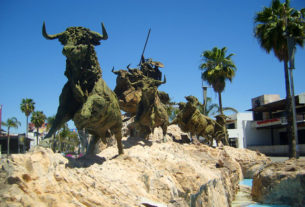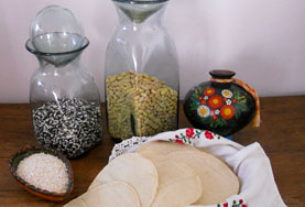The Huichols are a hearty and enduring people numbering about 18,000, most of which live in the Jalisco and Nayarit, two rugged and mountainous states in North Central Mexico.
They are descendents of the Aztecs and are related to their Uto-Aztecan speaking cousin, the Hopi of Arizona. They are representatives of a pre-Columbian shamanic tradition which is still functioning according to the ceremonies of their remote past. Having withstood the Spanish Invasion, they are still striving to keep their culture alive and viable, despite the ever increasing physical and cultural encroachment of their Mexican neighbors.
The Huichol romanticize their past, when game was plentiful and they were free to roam the vast mountain ranges and deserts of their homeland. This was a time of freedom for them, before they became tethered to the growing of maize.
Agriculture in their mountainous homeland is very difficult and crops can fail easily. They seek assistance from the forces of nature through an elaborate cycle of ceremonies to ensure their crops success and their own survival.
The ceremony to bring rain for the maize is performed by anointing the maize with deer blood, however the deer can only be sacrificed after eating peyote. The peyote must first be obtained by the pilgrimage to Wirikuta . Each ceremony is rooted in a previous one in a yearly cycle.
This yearly round of ceremonies reflects the universal symbol of a snake eating its tail. The eternal order of progression. One sacred act cannot be performed without first being qualified by a previous sacred act in a circular spiral that extends far back into the hoary depths of time.
By Robert Otey and adapted here with his kind permission.


